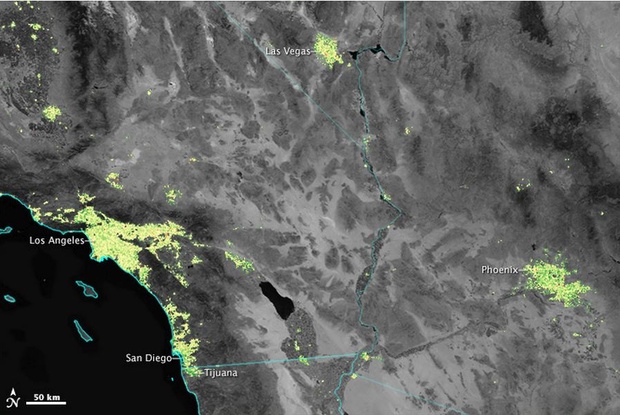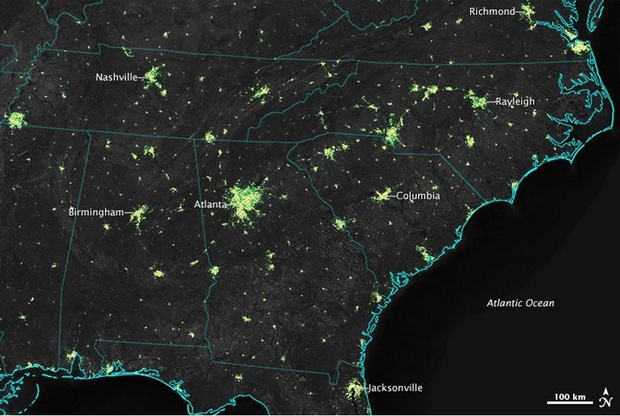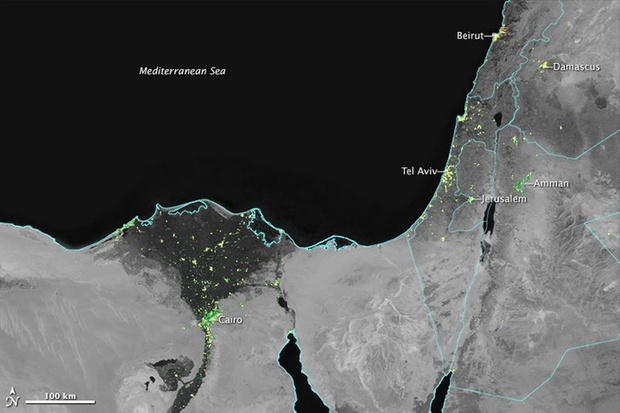America's Holiday Lights Can Be Seen from Space

NASA
They're especially bright in the suburbs, says NASA.
Forget going out to view your neighborhood's Christmas lights this year: You can do it the 21st-century way, bathed in the pallid glow of a monitor. That's because NASA has just released a wonderful bunch of satellite images of American cities, gleaming like nebulae with all their candy-colored LEDs, sparkling icicle nets, and illuminated, blow-up Santa Clauses.
Note that NASA's tech isn't so advanced it can tell a radiant tree-topper from a porch lamp, but it has measured a seasonal light increase around big cities—a 20 to 50 percent brightness jump during December, compared to other times of the year. The explosion of effulgence is clear in the images above and below, depicting areas where holiday lighting intensified in green (and where it's remained constant or dimmed in yellow and red, respectively).
The space agency captured these festive views using the Suomi NPP satellite, which has a sensor so keen it sees boat lights as flaming beacons in the dark seas. After analyzing the satellite data of America's lights, NASA scientists determined they brightened early and in places with single-family houses and yards, i.e. the suburbs. They explain:
In the United States, the lights started getting brighter on the day after Thanksgiving and continued through New Years Day, said Miguel Román, a scientist at NASA’s Goddard Space Flight Center and member of the Suomi NPP Land Discipline Team. Román and colleagues examined the light output from 70 U.S. cities in 2012 and 2013 as a first step toward determining patterns in urban energy use—a key factor in greenhouse gas emissions.
The science team found that light intensity increased by 30 to 50 percent in the suburbs and outskirts of major cities. Lights in the central urban areas did not increase as much as in the suburbs, but still brightened by 20 to 30 percent....
"It's a near ubiquitous signal," said Román. "Despite being ethnically and religiously diverse, we found that the U.S. experiences a holiday increase across most urban communities. These lighting patterns are tracking a national, shared tradition."
Snow cover fudges the signal, so the agency was only able to get images of warmer-weather cities. Here are the metropolitan centers of SoCal and the Southwest blossoming in the night:

The South and Southeast:

And because the United States isn't the only place to celebrate holidays, here's the Middle East's summertime surge of radiance during Ramadan and Eid al-Fitr (this image combines data from 2012-2014):



